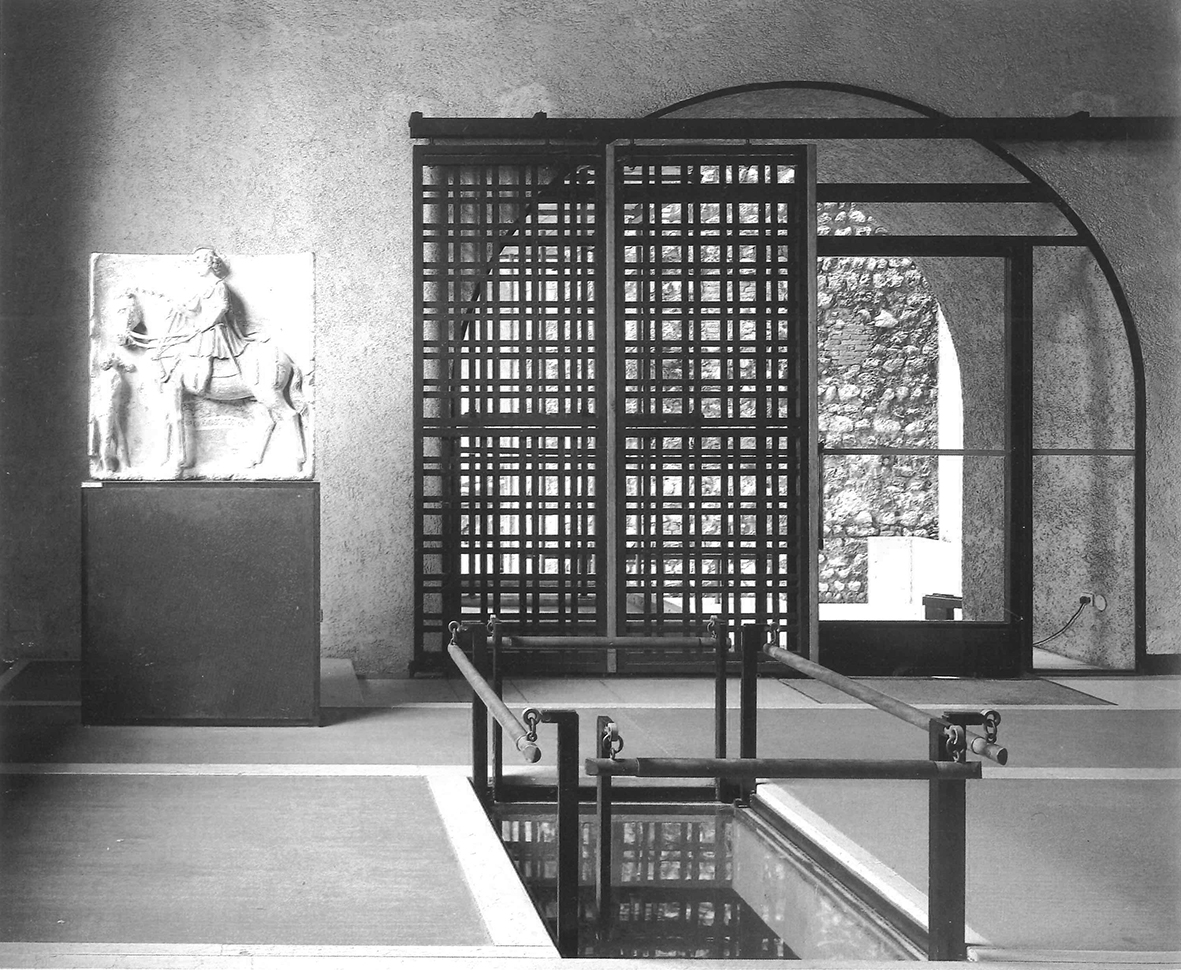[1] For
a detailed
museographic and project development analysis of this sequence, See a:
DI LIETO
A. (2006) – I disegni di Carlo
Scarpa per
Castelvecchio, Marsilio, Venezia e MURPHY R. (2017)
– Carlo Scarpa and Castelvecchio
revisited, Breakfast Mission
Publishing, Edinburgh.
[2] See
MARCHESE A. (1990) – “Teorie della
narratività” in L’officina
del racconto.
Semiotica della narratività, Arnoldo Mondadori
Editore, Milano, pp.5-68
RONDOLINO G. – TOMASI D. (2011) - “Che
cosa è un racconto” in Manuale
del
film. Linguaggio, racconto, analisi,
De Agostini, Novara, pp.10-17.
[3] Such
approach can be applied, bearing in mind
the different
peculiarities, to all the narrative architectures. The power of a work
like
the Chapel of Bruder Klaus, designed
on
Eifel hill valley by Peter Zumthor, lies in the tension marking the
relationship between
the object of value (the
chapel) and the long pathway (
the
opponent) that the
subject has
to
overcome to reach her
object of value.
The same of for the Liyuan library by Li Xiaodong where the
emotionality is
conveyed by the tension between the view of the
object
of value (the building) and the obligation for the subject
to descend a cliff and cross a river (
opponents)
to get there. A similar approach can be distinguished also in the
entrance
sequence of two narratively alike buildings. Both in Stockholm Library
by
Gunnard Asplund and in Ljubljana Library by Jože Plečnick, the conflict
rises
in the crossing of the dark stairs (opponent) to reach the bright room
of culture.
(
the
object of values).
[4] Palma
Bucarelli, Mostra di Piet Mondrian a Roma,
in L’architettura. Cronache e storia,
n.17, March 1957, pp.786-789.
[5] For
example, see the chapter La fine
all’inizio in Vincenzo Cerami, Consigli
a un giovane scrittore. Narrativa,
cinema teatro, radio, Giulio Einaudi editore, Turin, 1996,
pp.66-73.











